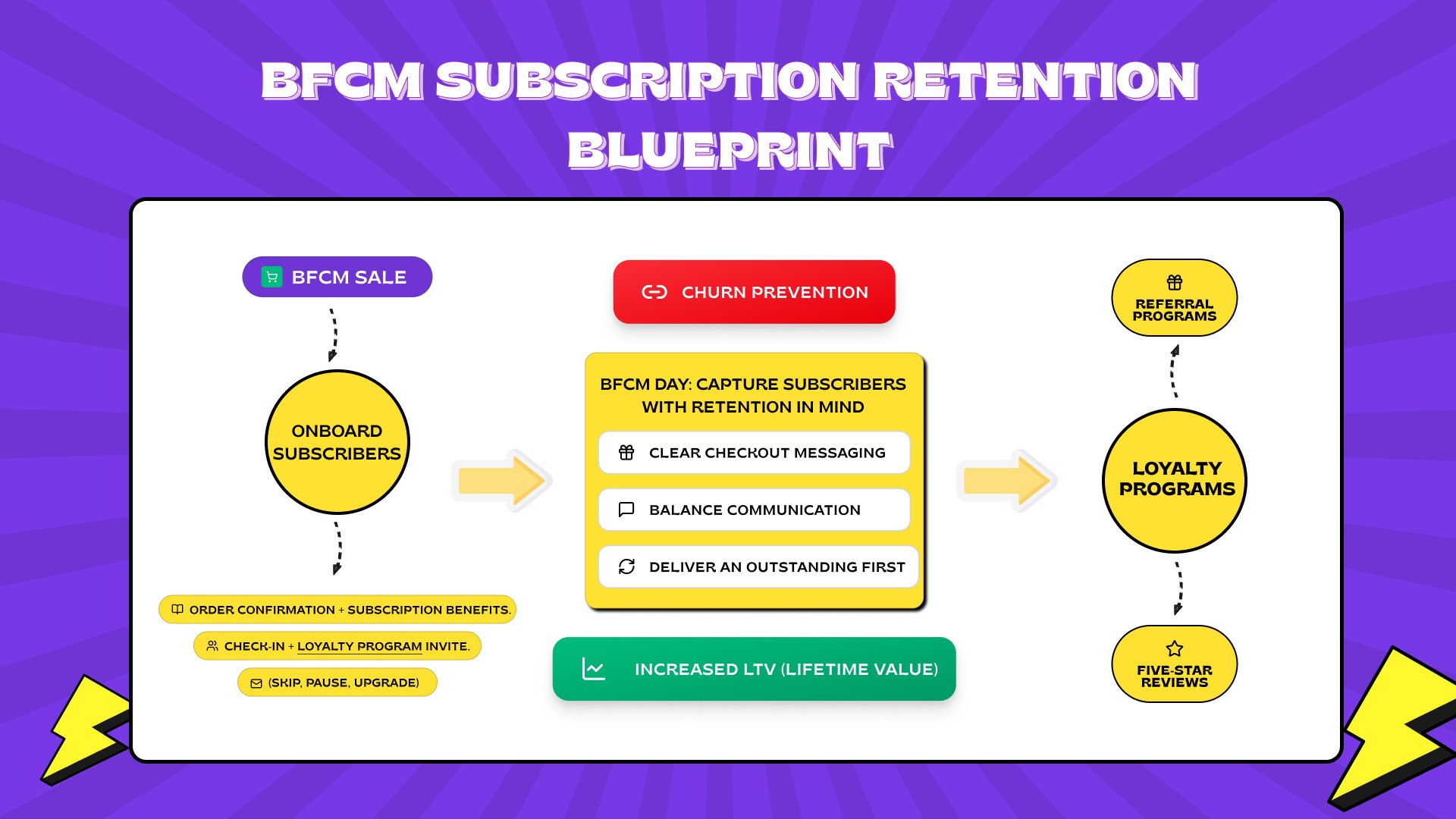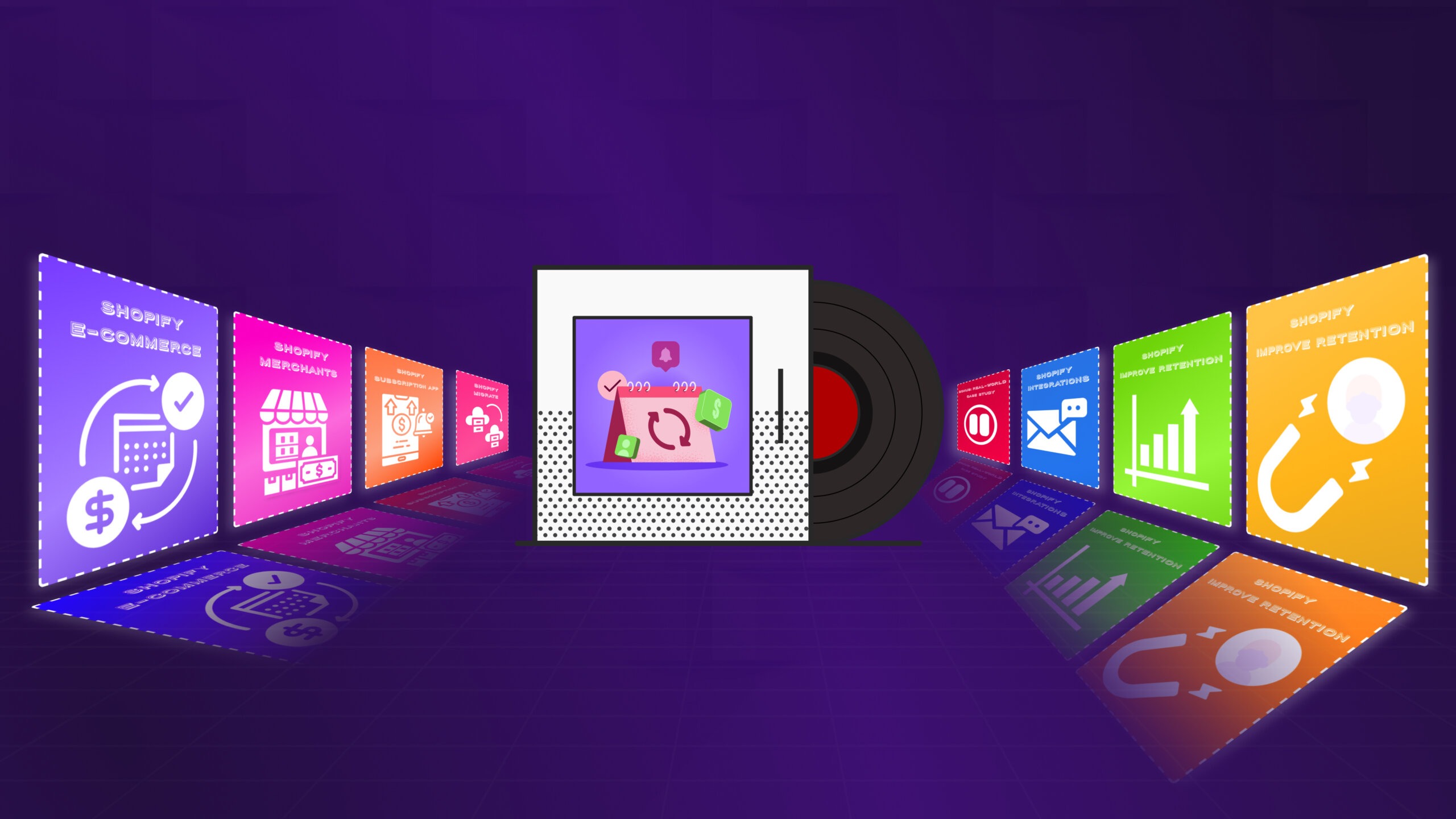
The BFCM Subscription Retention Blueprint: What Happens After the Sale Matters More
Published On: October 24, 2025 - 4 min read
Black Friday and Cyber Monday (BFCM) are a whirlwind—flash promotions, huge discounts, and a surge of new customers. But here’s the truth: what happens after the sale often matters more than the sale itself.
For Shopify merchants using subscriptions (via tools like Easy Subscriptions), the real win isn’t just acquisition—it’s retention. Turning one-time BFCM buyers into loyal, recurring subscribers is the key to long-term revenue.
This blueprint guides you through pre-BFCM planning, day-of strategies, and post-sale retention, ensuring your BFCM surge becomes sustainable subscription growth.
Why Subscription Retention Matters More Than Volume
1. One-off buyers vs. subscribers
BFCM is tempting for short-term volume. But many deal hunters may never return. Subscriptions, on the other hand, generate recurring revenue, increase customer lifetime value, and stabilize cash flow.
Acquiring a subscriber during BFCM means your marketing spend continues to pay off—if you nurture them after purchase.
2. High opportunity, high churn
Steep BFCM discounts can spike churn if neglected. For subscription merchants, consider:
- New-subscriber promotions must respect existing subscribers.
- The first month/order experience sets the tone for long-term retention.
- Post-purchase engagement turns a discount into recurring revenue.
Pre-BFCM: Lay the Groundwork for Retention
Audit your subscription flows.
Before the rush:
- Ensure your Shopify subscription app (e.g., Easy Subscriptions) has welcome flows, onboarding emails, and dunning flows for failed payments.
- Segment subscribers: new vs. existing, high spend vs. low spend.
- Identify churn triggers (shipping delays, product issues, discount fatigue) and plan mitigation.
Plan offers with retention in mind
- First-order discount + auto-subscribe: “30% off today + save 10% every month when you subscribe.”
- Subscriber-exclusive bundles: Encourage BFCM buyers to join a subscription plan.
- Reward loyalty: Offer existing subscribers perks or early access.
Set expectations for post-sale engagement.
- Build a welcome email sequence (Day 1–14).
- Define success metrics, e.g., the subscriber is still active after 90 days.
- Prepare communication so new subscribers feel supported—not just treated as an order number.
BFCM Day: Capture Subscribers With Retention in Mind
1. Clear checkout messaging
- Make the subscribe option prominent.
- Explain frequency, cancellation policy, and value clearly.
- Trigger an immediate welcome email acknowledging the subscription.
2. Balance communication
- More emails/SMS during BFCM, but avoid overload.
- Segment messaging: new subscribers get onboarding; one-time buyers get subscription invites.
3. Deliver an outstanding first experience.
- Ensure fast fulfillment.
- Send a “thank you for subscribing” email with product tips and subscription portal guidance.
- Showcase user-generated content and reviews to build trust.
Post-Sale: The Retention Blueprint in Action
1. Onboard subscribers in the first 14 days
- Day 1: Order confirmation + subscription benefits.
- Day 3: How to manage subscription (skip, pause, upgrade).
- Day 7: Tips to maximize product use.
- Day 14: Check-in + loyalty program invite.
2. Deliver ongoing value
- Exclusive perks: early product launches, bonus items, and subscriber discounts.
- Engagement: newsletters, blog posts, videos.
- Community: referrals, unboxing posts, social proof.
3. Prevent churn with data
- Monitor failed payments/dunning rates.
- Segment subscribers by behavior (skipped shipment, unopened emails, failed charges).
- Trigger proactive interventions (e.g., “Update payment info—get 10% off next month”).
4. Upsell & incentivize
- Offer discounts or gifts on the next shipment.
- Convert first-time BFCM buyers into subscribers with personalized follow-ups.
- Create bundles based on purchase behavior.
5. Loyalty programs
- Double points or bonus rewards for subscribers.
- VIP tiers are exclusive to subscribers.
- Engagement reduces churn and increases long-term value.
Measuring Success: Metrics That Matter
Track beyond revenue:
- Subscriber churn rate (monthly/quarterly) for BFCM-acquired subs.
- Active subscribers after 30/60/90 days.
- Lifetime value (LTV) of BFCM vs. non-BFCM subs.
- Engagement metrics: email opens, portal logins, and skip/pause rates.
- Payment failures/dunning rate.
- Repeat purchase rate for non-subscribers offered a subscribe option.
Common Pitfalls
- Treating BFCM buyers as disposable.
- Ignoring existing subscribers.
- Poor subscription onboarding.
- Neglecting dunning/payment failures.
- Using the same messaging for all customers—segmentation is essential.
Conclusion
BFCM is great for acquisition—but your post-sale strategy determines real success. From onboarding to loyalty programs, from churn prevention to personalized communication, every touchpoint matters.
At Easy Subscriptions, we help Shopify merchants not just acquire subscribers during BFCM but also keep them engaged, reduce churn, and maximize lifetime value. Prepare your retention blueprint now to turn your BFCM bump into sustainable subscription growth.
Install the Easy Subscription App on your Shopify store today!
FAQs
What is subscription retention, and why is it important?
It’s how well you keep subscribers engaged and paying. High retention = stable revenue, higher LTV, and lower acquisition cost.
How can I increase retention after BFCM on Shopify?
Onboard quickly, offer perks/loyalty rewards, personalize future offers, monitor payments, and provide a superior subscriber experience.
Should I offer big BFCM discounts for subscriptions?
Yes, but carefully. Balance acquisition with retention—existing subscribers shouldn’t feel overlooked.
What happens after the sale that affects retention the most?
- First impressions: fulfillment speed and subscription clarity.
- Onboarding: communication, value explanation, and empowerment.
- Ongoing engagement and operational reliability.
How do I measure subscription churn and retention?
Track subscriber count changes, LTV, engagement metrics, payment failures, skip/pause behavior, and repeat purchase rates.




















